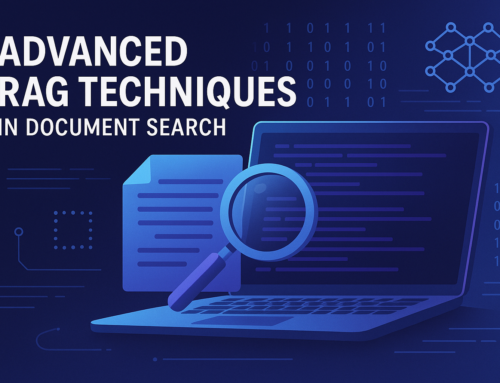A Guide for Executives
The Reality Behind the AI Buzz
You’ve likely heard the excitement around artificial intelligence, particularly since ChatGPT burst onto the scene two years ago. While there’s certainly hype in the market, there’s also substantial practical value to be gained—if you approach it strategically. This guide will help you understand the key technologies and their business applications, without getting lost in technical jargon.
In this brief guide we’ll talk about:
- Understanding the Core Technologies
- Identifying some Real Business Applications with Quick Returns
- Starting Small and Scaling Smart
- Avoiding Common Pitfalls
1. Understanding the Core Technologies
Smart Digital Assistants (Large Language Models)
Think of large language models (LLMs) as highly sophisticated digital assistants that can understand and generate human-like text. Unlike traditional software that follows rigid rules, these assistants can:
- Understand context and nuance in communication
- Generate creative content and solutions
- Learn from examples without explicit programming
- Handle a wide variety of tasks through natural conversation
Memory-Enhanced AI (Retrieval Augmented Generation)
Imagine giving these digital assistants access to your company’s knowledge base (privately and securely, of course). That’s what Retrieval Augmented Generation (RAG) does. It allows AI to:
- Reference your company’s specific documents, policies, and data
- Provide answers based on your actual business information
- Maintain accuracy by drawing from authorized sources
- Reduce the risk of making things up or using outdated information
AI Agents: Your Digital Workforce
AI agents are like digital employees that can handle entire workflows. They combine the abilities of digital assistants with the power to:
- Complete multi-step tasks independently
- Access different tools and systems as needed
- Follow established business processes
- Escalate to humans when necessary

2. Real Business Applications with Quick Returns
Customer Service Enhancement
- Current Challenge: High volume of repetitive customer inquiries eating up service team bandwidth
- AI Solution: Implement an AI assistant that handles routine questions and documents, escalating only complex cases to human agents
- Business Impact:
- 40-60% reduction in response time
- 24/7 customer support coverage
- Higher customer satisfaction
- More time for human agents to handle complex issues
Knowledge Management and Internal Support
- Current Challenge: Valuable time lost searching through documentation and waiting for internal support responses
- AI Solution: Deploy an AI system with access to your internal knowledge base to answer employee questions instantly
- Business Impact:
- Reduced time spent searching for information
- Faster onboarding of new employees
- Consistent answers across the organization
- Lower burden on internal support teams
Document Processing and Analysis
- Current Challenge: Manual processing of contracts, invoices, and reports creates bottlenecks
- AI Solution: Use AI to review, summarize, and extract key information from documents
- Business Impact:
- 70-80% reduction in document processing time
- Fewer human errors
- Better compliance through consistent review
- Faster business decisions
 3. Starting Small and Scaling Smart
3. Starting Small and Scaling Smart
Phase 1: Quick Wins (1-3 months)
- Identify a specific, contained problem in your organization
- Start with proven solutions like customer service automation
- Use existing AI platforms rather than building from scratch
- Measure results against clear business metrics
Phase 2: Expand Success (3-6 months)
- Add company-specific knowledge to your AI systems
- Extend successful solutions to related departments
- Begin training employees on AI collaboration
- Document and share early wins
Phase 3: Transform Operations (6-12 months)
- Implement AI agents for complex workflows
- Connect AI systems with your business software
- Develop AI-first processes where appropriate
- Scale successful solutions across the organization
 4. Avoiding Common Pitfalls
4. Avoiding Common Pitfalls
- Starting Too Big: Focus on specific, measurable problems rather than broad transformation
- Ignoring Training: Ensure employees understand how to work effectively with AI tools
- Skipping Governance: Establish clear policies for AI use and data handling
- Neglecting Measurement: Define success metrics before starting any AI project
Next Steps
- Identify one specific business challenge that costs significant time or resources
- Research existing AI solutions in that area
- Start a small pilot project with clear success metrics
- Document results and use them to guide expansion
Conclusion
AI implementation doesn’t need to be overwhelming or require massive investment. By starting with focused solutions to specific problems, using proven technologies, and scaling based on results, you can achieve significant business impact while managing both risk and cost. The key is to begin with clear objectives, measure results, and expand based on proven success.
Remember: The goal isn’t to implement AI for its own sake, but to solve real business problems and create measurable value for your organization.
CtiPath can help you make AI work for your business!
Contact us today.





